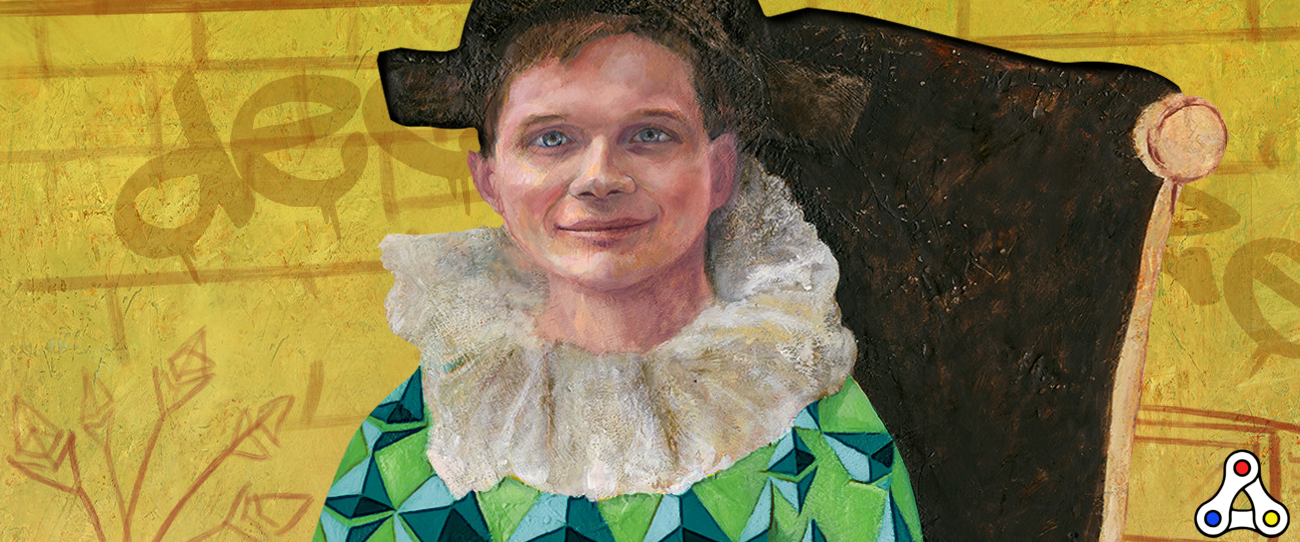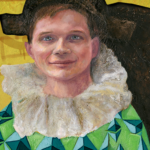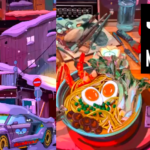Crypto art frontrunners Trevor Jones and Alotta Money have collaborated on the programmable artwork EthBoy on Async Art. The physical artwork shows a young Vitalik Buterin as Picasso’s son Paulo, who’s dressed up as Harlequin. However, the programmable digital artwork changes based on certain calendar days and the price fluctuations of Ethereum.
The artwork changes based on changes in the value of ETH, but also gas fees. In addition the artwork is connected to one of Vitalik Buterin’s wallets, and it changes on his birthday (January 31st) and the release day of Ethereum (July 30th). Furthermore there are some small aesthetic details that change based on the pricing of Bitcoin.
There’s already a first bid for EthBoy on Async Art. An anonymous bidder is offering 10 ETH or $4500. Judging by a recent sale of Micah Johnson’s programmable artwork, the final pricing will be at least ten times this amount.
Passive income as art owner
The artwork is unique. There will only be one tokenized version of EthBoy. The programmable layers change daily. The person who owns EthBoy after the auction ends on Saturday 21st will receive 33% of the profit of 10 future derivative EthBoy NFTs over the next five years. If EthBoy is sold within five years, future profit sharing will be transferred to the new owner.
The profits come from the sales of mini artworks based on the master artwork. Every twelve months Alotta Money and Trevor Jones will sell an animated artwork that looks back at the past 182 days of changes to EthBoy. The first one of these auctions will take place on OpenSea shortly after July 30th, 2021.
EthBoy artwork description
Young Vitalik takes on the role of Picasso’s son Paulo dressed as Harlequin in this artwork but the octahedron Ethereum logo replaces the chequered pattern of the original jester outfit. Leaning against a large chair, the boy genius fiddles with his fingers in a somewhat nervous manner; nevertheless, he stares directly at the viewer with what appears to be a confident, ‘Mona Lisa-like’ smile. Vitalik has no idea what the future has in store for him, but he’s prepared to face any obstacle ahead as he begins life’s adventure.
What is crypto art?
Crypto art or digital art has been around for many years. However, without the existence of blockchain technology it was impossible to verify authenticity and rarity. Now digital art connects directly with an unique token on the Ethereum blockchain. That way buyers can see how many copies of a certain artwork there are, and whether the product is original.
The concept of seeing a digital image as art, is one thing. However, for many people it will be a challenge to consider digital images as valuable. Consider this: The Mona Lisa is worth many millions of dollars. If I would paint the Mona Lisa in an exact copy, it would be worth only 50 dollars. Because we all know where the original version is. Being able to verify the authenticity and rarity of a piece of art is crucial.
Some people don’t care about the Mona Lisa. It’s just a painting. They are happy to download an image for Google Images, print it on canvas and hang it in their living room. Others want the real deal. The same rules go up for digital crypto art. Some people want to original one, others are happy with a copy on their phone.
Crypto art is gaining popularity. Platforms like Rarible, Superrare and Knownorigins are thriving. The introduction of blockchain technology allowed digital artists to create unique artworks. Ownership and rarity are now verifiable through the blockchain, creating true value. Last year the crypto art market was good for 559 thousand dollars in trading volume. The market grew 115 percent compared with the year before.
In addition several artists from ‘outside’ the blockchain space have been showing interest. MakersPlace has already partnered with comic book artist José Delbo, while NiftyGateway sold some original Vandal Gummy artworks. Even Paris Hilton sold a drawing!





